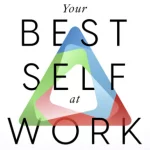Managing a business isn’t easy. You experience challenges every day – you have to manage inventories, customer inquiries, sales and more.
To accomplish those tasks, you rely on top talent players at your company. From a human resources perspective, you probably consider some of these employees irreplaceable. Consequently, if one or more of these employees were to leave, there would be a lot at stake for the company.
What if we told you that this dreaded human resources nightmare can be avoided?
How?
You have to uncover the top talent that exists at your organisation and retain them by designing appropriate incentives that keep them happy, fulfilled and motivated every Monday through Friday.
To do so, we divided this guide into three easy categories:
- FIND is about searching through your existing organisational chart to identify standout employees.
- HIRE is about looking at external candidates to fit your company’s interests.
- KEEP is about putting together an attractive brochure of incentives to keep your top talent loyal to your company.
But first, we need to define the term top talent so you know what you should be looking for.
What is top talent?
Gallup, a global leader in employee assessments and team building, describes top talent as “a recurring pattern of thought, feeling or behaviour that can be productively applied.” Your talents are things that you do well and often.
At the workplace, excellent performance is possible when there is a great match between a person’s talents and their role. To do any role excellently, whether it be in healthcare or at an office building, it requires habits that top talent individuals are able to successfully convert into productivity.
For the purposes of this article and to pertain to the business setting, we’d like to add to Gallup’s definition. From an organisational perspective, there’s another component that’s important to look for. It’s about finding an employee’s fit and purpose at a company. A top talent individual is someone who is motivated in the interest of the team and their performance makes a difference. They are able to grow and develop as an employee (and as a person) alongside the company. Ideally, a top talent individual is able to find developmental opportunities anywhere in your company so they won’t abandon you in exchange for the next best opportunity at a competing firm.
1. Finding top talent in your company
Before going to the job market or contracting a recruitment firm, think first about the talent in your own organisation. Watch out for employees that have potential for further development (we’ll come back to this).
Who consistently achieves high results? Who pushes their team members to work smarter and harder? Whose quarterly reports show the most growth? Even though you have hand-chosen who works at the company through a hiring process, some candidates may have a better fit than others.
But be careful in how you assess top talent. For example, someone who is doing really well in their current job might not necessarily fit the description of a role you’re looking for. And, if they are taken out of their current role, will you be able to find a replacement who will perform just as well?
When assessing top talent, it is important to consider what your business needs, and how the candidate will fit into those needs. Are they versatile enough to adapt to a different position at your company? Do they have the intrinsic motivation required to grow into more senior roles, to manage staff or to contribute to the leadership team?
Most of all, identify who your top talent employees are through their previous performance and then challenge them to do more. In a study by Harvard Business Review, 21% of top talent employees said that they were “highly disengaged.” This means that you need to find what motivates each individual and accordingly increase their involvement in the company’s ventures.
2. Hiring top talent for your company
If you’ve done an assessment of your organisational chart and decided that no one fits the bill of being top talent, you always have the option of hiring someone new.
If you do this, have you ever considered employee profiling? This is a methodology that can help identify the personalities and traits of high-performers. Basically, new candidates will take an assessment that benchmarks how well they will perform in the position based on their traits.
There’s some downsides to employee profiling. Namely, you don’t want to hire duplicates of your existing talent. Any new addition to your team should be able to contribute new value and unique perspectives. The best-performing teams are diverse ones, which includes personalities, backgrounds, genders and ethnicities. This is better for jobs that are not complex or skill-based.
When in doubt, try working with a professional career coach who can help you profile your existing talent and still adhere to the importance of diversity and inclusivity. A career coach can help you hire the right person for the job, assist in in-person or virtual onboarding, and create individualized development plans for top talent individuals.
3. Keeping top talent in your company
So, you’ve done an internal assessment of your existing talent and you’ve identified a few high performers that have the ability to grow at your company. Through a hiring process, you may have even added one more all-star performer to your team.
How can you ensure that those individuals stay at your company and don’t leave you for the next best opportunity outside your organisation?
We can use an example to illustrate.
Let’s say you launch a new product and so need a marketing firm to help you get the word out about it. If you were making the decision about what company to choose, how would you assess the potential firms? You’d consider the price, the reputation, the opportunities for a long-term relationship and more.
It’s not all that different to how an employee makes their career decisions. They look at their options and assess the best salaries, opportunities and relationships that can be fostered at potential organisations.
If you want to remain relevant to your high performers, you need to offer them incentives to keep them happy and fulfilled at your workplace.
For starters, financial incentives such as bonuses can go a long way. Be sure that they are attached to accomplishing goals or hitting important targets.
There’s lots of other incentives to choose from, too, and they don’t have to be tangible. Something simple like flexibility or variable work hours can be surprisingly attractive to employees. Giving them flexibility to choose their holidays or leave work early on certain days to take care of their families can contribute to an employee’s loyalty.
Other incentives can include training, learning or mentorship opportunities. Be sure to openly discuss with your employees about what they are looking for and how you can help them get there.
In other cases, some high performers may only want the opportunity to take on more responsibility. So let it happen! Trust in your high performers and they will reward you ten times over.
Or, to be more specific, a recent McKinsey & Company study suggests that top performers are eight times more productive than average employees. You definitely don’t want to let that go!
Intrinsic motivation is proven to elicit stronger performance and more employee loyalty, so make sure your top talent employees are in a position to do work that they enjoy. Give them the room to stretch their legs and make mistakes.
Those mistakes are development opportunities that can build their confidence and allow them to develop into future leaders at your organisation.
Ultimately, be specific in how you design your incentives. Create unique options that work for your unique talent. Doing so will save you time and money rather than developing employee programs that are suited to the masses but aren’t effective at incentivizing those few employees that matter most.
When finding, hiring and keeping top talent, the goal is to align the needs of your employees and the needs of the business. To start your search for top talent in your company, schedule a free 15-minute call with one of our coaches today.







